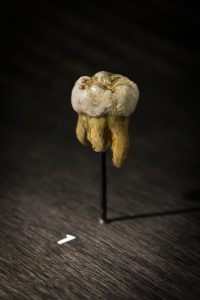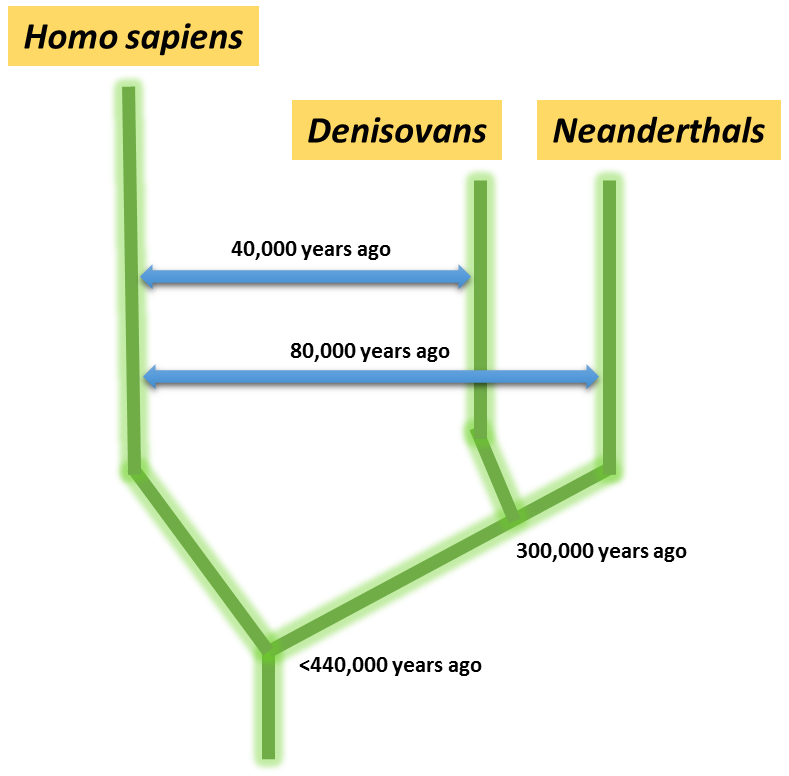By Liza Olkhova
What is the definition of the classification term ‘species’? In biology class we usually learn that members of the same species are capable of breeding and producing fertile offspring. However, with recent discoveries of the new species within our genus Homo and some genomic revelations about our own species Homo sapiens sapiens, this definition suddenly becomes a blurred one.
This story is ultimately about caves, bones and stretches of genetic code, which can be aligned and compared between different species to give us an idea of how closely related they are and even an estimation of the point in time at which they diverged.

Most of the Neanderthal genome was obtained from individuals found in the Vindija Cave, Croatia, and it shows that present day humans of European descent carry approximately 1-4% of the Neanderthal genome. It means that our species was successful at interbreeding with other species of the Homo genus.
In 2010, a major finding was made within one of the caves located in the Altai Mountains, southern Siberia. Denisova Cave had ancient secrets buried inside, including the remains of another yet-undescribed hominin: a tooth and a finger bone, from which DNA was extracted. At this point, a pattern started to emerge, and decoding the DNA demonstrated that Homo sapiens had also bred with Denisovans. However, stretches of Denisovan genetic information can also be found in modern-day Melanesian populations, for example, in Papua New Guinea. This poses the intriguing question of how Denisovans or the Homo sapiens who interbred with them might have migrated to these regions from Siberia.
An evolutionary tree according to Darwin and most people’s understanding of evolution is represented by clear-cut linear branches with distinct separation. As with the majority of biological processes and events, however, it is a lot more complex: we are now able to see how these branches intertwine, giving us a much messier, but complete, depiction of evolution of our genus. Blue arrows on this tree show interbreeding and the moment in time where it was most likely to occur. This representation shows that Denisovans and Neanderthal groups are more closely related to each other than either of them to Homo sapiens.

To complicate matters even further, geneticists that have looked at over 5000 genomes collected from across the globe have found that some of the ancient chunks of DNA do not match Neanderthal nor Denisovan DNA sequences, hinting at the existence of another yet unknown ghostly hominin species.
As both Neanderthals and Denisovans are extinct, we are the only modern human species remaining. However, our species’ capacity to interbreed with both means that we still carry their DNA within us .
—–
Post was inspired by a book called A Brief History of Everyone Who Ever Lived written by Adam Rutherford. If you would like to find out more head over to:
https://www.nature.com/articles/nature09710
https://www.nature.com/news/2011/110809/full/476136a.html
https://www.nature.com/news/modern-human-genomes-reveal-our-inner-neanderthal-1.14615
https://www.newscientist.com/article/2163910-our-ancestors-mated-with-the-mystery-denisovan-people-twice/
https://www.newscientist.com/article/mg21128323-200-the-vast-asian-realm-of-the-lost-humans/
https://www.newscientist.com/article/mg21128254-000-stone-age-toe-could-redraw-human-family-tree/